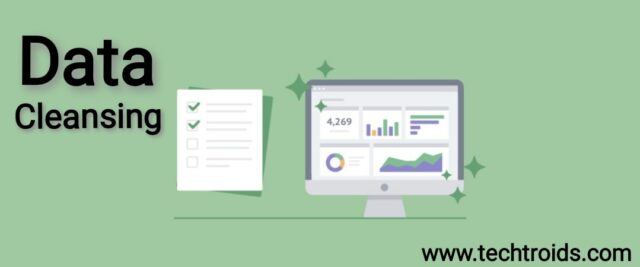Data Cleansing Techniques: The quality of data determines the success of a business in today’s data-driven environment. Accurate reporting, effective decision-making, and enhanced customer experiences depend on the quality of data. On the other hand, inaccurate data can result in irreversible mistakes, ill-informed decisions, and a decline in customer confidence.
Data cleansing requires a reliable internet connection such as the Cox Internet plans to ensure data is accurate and reliable. Businesses can utilise clean data to achieve better results. Let’s discuss some useful tips and methods for effective data cleansing, in the article below.
Understanding Data Cleansing
Data cleansing, also known as data scrubbing, is the process of identifying and correcting errors, inconsistencies, and inaccuracies in datasets. These mistakes may result from several things, including manual data entry, computer bugs, or outdated information. The goal of data cleansing is to get rid of duplicate records, standardised formats, and validate entries to maintain the accuracy and integrity of the data.
The Importance of Data Quality
Let’s take a moment to understand why data quality is crucial for businesses before discussing ideas and tactics for data cleansing:
Informed Decision-Making:
The basis for well-informed decision-making is accurate information. When people have confidence in acquired data, they can make better decisions that boost productivity and profitability.
Customer Trust:
Customers rely on businesses to provide accurate information. Errors in consumer transactions or records can undermine confidence and damage reputation.
Operational Efficiency:
Having clean data simplifies procedures. It cuts down on the time and work required to troubleshoot problems and irregularities.
Regulatory Compliance:
Organisations must keep precise and up-to-date records since businesses are subject to data regulations. Non-compliance can lead to hefty fines and other penalties.
Given the significance of data quality, let’s explore some useful strategies for efficient data cleansing:
Define Clear Data Quality Standards
Start by creating precise data quality criteria that are in line with the goals of the organisation. These guidelines must define the determinants of accurate and reliable data for the company’s requirements. Consider factors like punctuality, consistency, precision, and accuracy. Data cleansing operations are guided by well-defined standards, which also serve as a basis for gauging performance.
Perform Regular Data Audits
Conduct detailed assessments of datasets to detect inconsistencies, errors, and duplication. Schedule these audits at regular intervals to ensure data quality maintenance. Regular data audits are critical to identify and fix data quality concerns as soon as possible.
Utilise Data Cleansing Tools and Software
There are many types of software and applications for data cleansing that can automate and expedite the process. These programs can help in identifying and fixing problems, evaluating data entries, and removing duplicates. The right software can improve data quality while saving time and resources.
Standardise Data Entry Procedures
Data quality issues may arise from inconsistent data entry procedures. Establish standardised data entry methods for the entire organisation. To preserve uniformity in data, make sure that all personnel receive adequate training for using these techniques.
Implement Data Validation Rules
Implementing data validation rules can prevent incorrect data from entering the system. For instance, companies can set rules to validate email addresses, phone numbers, or postal codes.
Address Duplicate Records
A frequent problem with data quality is duplicate records. They might cause misunderstandings, confusion, and false reporting. Deduplication techniques can be used to find and combine or remove duplicate records from the datasets.
Enforce Data Governance
The framework for managing data quality is known as data governance. It consists of rules, procedures, and policies. Create a data governance team within your firm to manage activities for improving data quality, upholding data standards, and resolving data-related problems.
Educate and Train Your Team
The quality of data is critically dependent on the company’s staff. Make sure they receive regular training to ensure that they understand the importance of data quality and their contribution to it. Promote data responsibility within the organisation.
Monitor Data Quality Metrics
Establish key performance indicators (KPIs) to gauge the accuracy of the data. Keep an eye on these metrics to gauge the performance of data cleansing efforts. Utilise this information to improve and modify data quality procedures.
Document Data Cleansing Procedures
Documenting data cleansing techniques is necessary for consistency and transparency. Make a detailed playbook for data cleansing that describes the procedures, equipment, and responsibilities involved. This documentation is a useful tool for the team for future reference.
Conclusion
Effective Data Cleansing Techniques is a continuous process that improves data quality over time. Businesses can retain accurate, and credible information that supports informed decision-making, fosters consumer trust, and enhances operational effectiveness using these useful strategies and suggestions.








